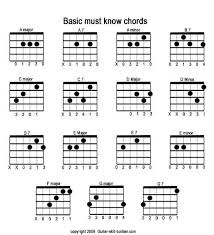 When people begin learning guitar chords, they may have trouble making all the notes ring out clearly. A muddled, metallic chord is usually the result of one or more of three primary problems.
When people begin learning guitar chords, they may have trouble making all the notes ring out clearly. A muddled, metallic chord is usually the result of one or more of three primary problems.
First, guitar players must make sure that their fingers are squared as much as possible. When fingers begin to flatten, more than just the fingertip will touch a string, and this muddles the sound. The joints of the finger should make a sort of box with the fingerboard serving as the fourth side. Flat fingers muffle strings and prevent them from making a clear, crisp sound.
Second, finger placement matters. While most amateur guitar players understand that they should not place their finger directly on a fret, which causes metallic vibrations, they may not understand what comprises the best placement. Pressing midway between the two frets can also cause a twang. Ideally, the placement should be at about the three-quarter mark toward the fret needed for the chord.
Third, pressure is important. Pressing too hard on a string causes stress in the hand. However, not pressing hard enough can also be a problem. When fingering a chord, players should strive for even distribution of pressure among all fingers without pushing too hard. Getting the feeling for a chord largely just takes practice.